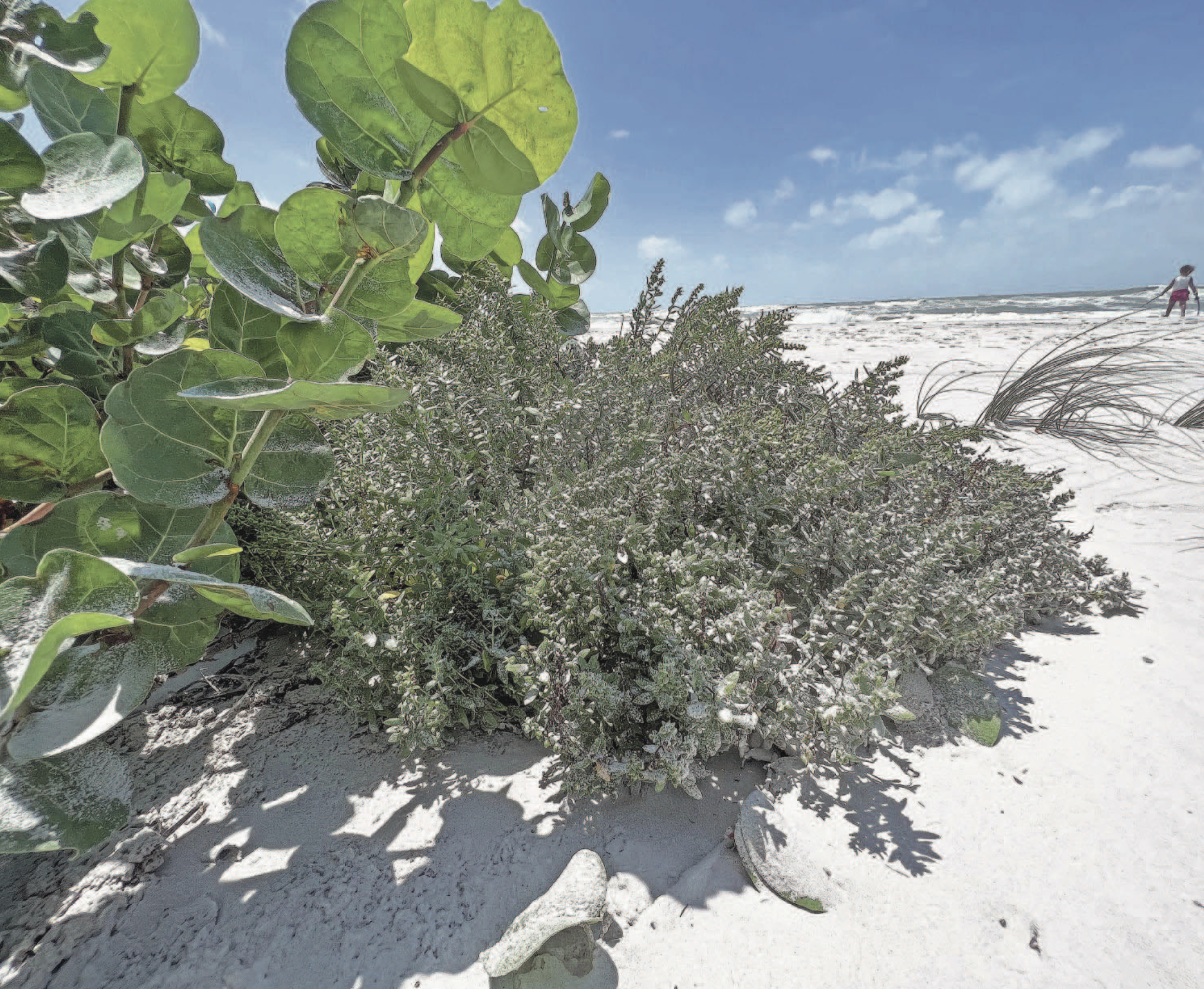
Beach vegetation traps sand and stabilizes coastal dunes
“Season” in Southwest Florida means a bevy of activities in our coastal communities. Chief among them: beach trips. The beach is one of our most celebrated natural resources, and rightly so. We know beaches as tourist magnets and economic drivers. But we less often consider the beach as habitat, a wildlife corridor spanning over 800 sandy miles along the state’s perimeter. Sea turtles, shorebirds, crabs and more depend on beaches for food and shelter. From our beach chairs, we may subconsciously note swooping shorebirds and scurrying crabs. Do we do the same with coastal plants? Doubtful. In fact, we turn our backs to them! Yet, the beach ecosystem wouldn’t be without plants. Sand-trapping vegetation literally anchors the beach, forming dunes up and down the coastline. These dunes provide food and shelter for wildlife, and they help shield the human environment against coastal flooding and high waves. These plants need your attention—And your help.
First, I challenge you to look carefully at what’s growing along the shoreline. At first glance, you may see merely a patch of green. Look again. How many species do you observe?
Each is doing a special job. Plants like railroad vine grow quickly and hold onto sand with their roots, stems and leaves. They are considered “dune-initiating” plants. Once the initiators have done their job, slower-growing species like bitter panicgrass can take root. This clumping grass traps sand and elevates dunes. These are just two examples of the many plants that have adapted over time to thrive in loose, nutrient-poor sand, tolerate salt spray, and survive periodic battering by storms. Together, they make a resilient ecosystem.
Shorelines exist in a state of dynamic equilibrium — that is, there are ever-changing adjustments made to ever-changing conditions. You’ve probably noticed this: one day, you may see rough and tumbling surf; the next, the Gulf may look like perfectly still glass. Sometimes, the tides give us only a narrow band of sand upon which to set our beach chairs; other days, you have enough room for a game of football. The one constant: plants.
Think of the beach ecosystem like it’s a bank. The dune is a savings account, and the wind and waves make daily deposits and withdrawals of sand. Beach vegetation traps sand and stabilizes dunes, essentially keeping the elements from depleting the account.
When you imagine dunes, though, you might picture towering sand mounds. While “mound of sand” is the very definition of a dune, a dune’s size is determined by tidal range, onshore winds, sand particle size and available sand. The dunes on our coast will never be imposing behemoths, but that doesn’t mean they are unimportant. Even our smaller-scale structures offer protection against storm surge, as they dissipate wind and wave energy. There is a caveat. Nothing can prevent damage from storms on the scale of Hurricane Ian. However, a healthy, biodiverse coastline provides better sanctuary for our wildlife and more resilience to everyday stress from wind, waves and storms without names.
Britt Patterson-Weber is board member of Florida SEE and Vice President of Education & Interpretation at Naples Botanical Garden.